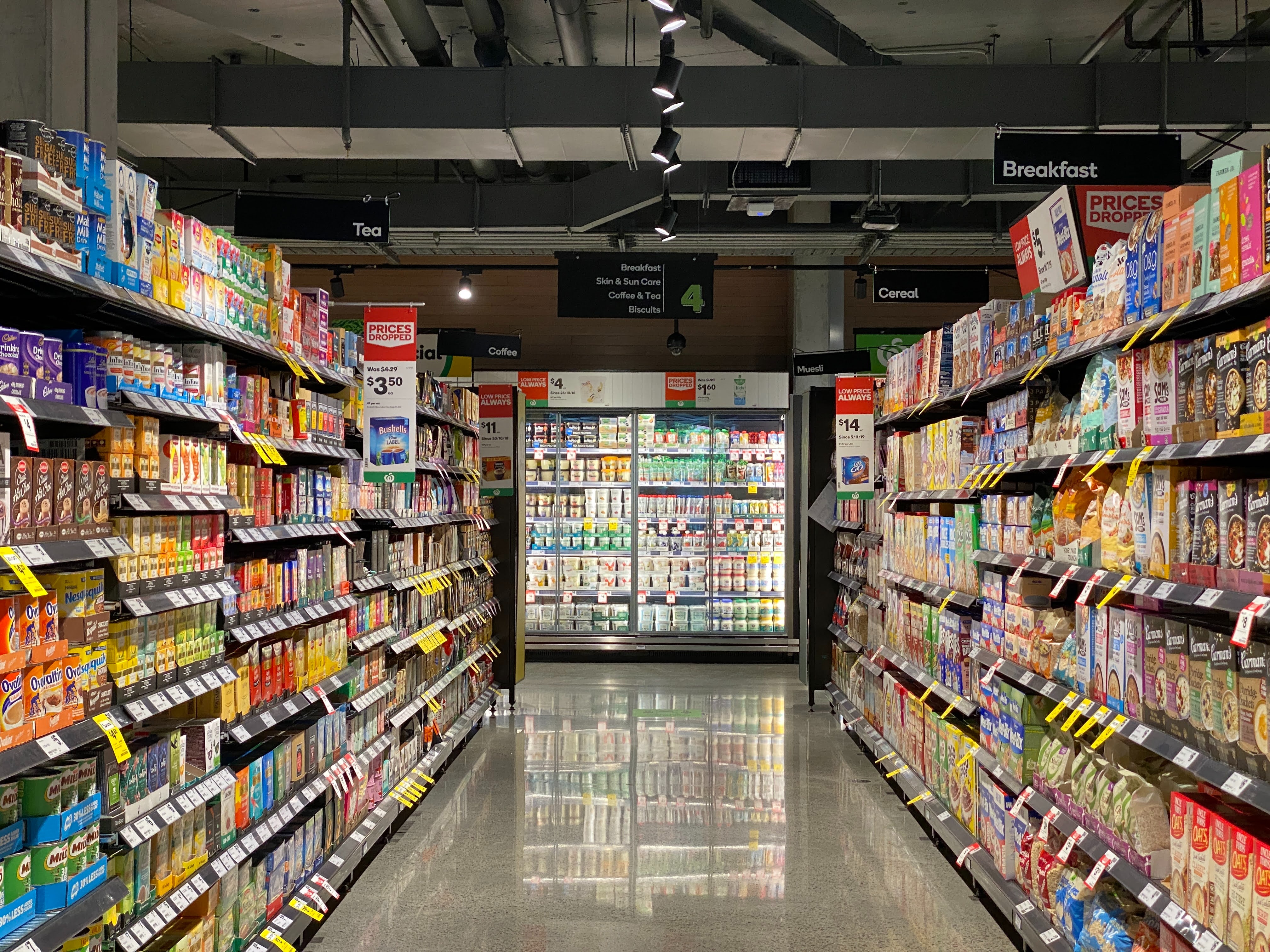The global retail supply chain is a complex system with many stakeholders. This includes your company, its customers, suppliers and any other participant in the supply chain.
In this context, sustainability refers to the ability of the supply chain to continuously improve its performance, whilst reducing its environmental impact.
There are many challenges associated with sustainability in the retail supply chain. It is important for companies to analyse their own impact, and the environmental footprint, and identify areas where improvements can be made.
In this article, discover the challenges and the solutions available to retail suppliers to make their supply chain more sustainable.
Quick Navigation:
I. What is sustainable development?
II. Strategies to manage the environmental issues of mass distribution
III. Strategies to manage the social issues of mass distribution
IV. Why should distributors integrate sustainable development into their supply chain?
I. What is sustainable development?
In recent years, the term "sustainable development" has become increasingly present in our daily lives. This concept was defined by the Brundtland Commission of 1987 as:
"Development that meets the needs of the present without compromising the ability of future generations to meet their own needs."
This definition encourages continuity between past, present and future generations, making sustainable development a continuous process that requires constant improvement and adaptation to changing environmental conditions.
Sustainable development not only concerns the economy, but also has social links to human rights, justice or culture; environmental factors such as biodiversity or ecosystems; as well as technological aspects such as energy efficiency.
II. Strategies to manage environmental issues of mass distribution
1. Reduce your waste
One way to meet the challenges of sustainable development in mass distribution is to reduce the waste associated with the supply chain. To do this, you need to understand what constitutes waste and how to reduce it.
Don't overproduce:
Overproduction occurs when companies produce too much of a product before they know if it will sell or not. This leads to loss of resource as well as waste of materials.
It is therefore important for the retail supply chain to implement a ‘just-in-time’ system.
Just-in-time is a procurement strategy that involves minimising the amount of inventory in a company's supply chain. It reduces waste and allows companies to respond more quickly to changing market conditions. It also helps to reduce the amount of resources needed to manufacture and deliver products, which has environmental benefits.
Avoid excess packaging:
Packaging has always been an important part of the supply chain. It is used to protect product and to provide information about it to consumers. However, in recent years there have been growing concerns about excess packaging.
One way to overcome this problem is for retail suppliers to find new ways to ship products so they don't use as much cardboard or plastic. For example, they could use materials that are more environmentally friendly, such as recycled or biodegradable paper, instead of plastic bags or boxes.
They can also consider their choice tertiary packaging, for example, pallets. At LPR - La Palette Rouge, our company is a specialist in pallet pooling: a pallet rental and management system that promotes the use of reusable pallets and thus maximises circularity within the supply chain.
Pallet pooling is a good way to reduce packaging waste, streamline logistics and save money by renting, rather than buying, pallets. To learn more about pallet pooling and its advantages, read our dedicated article.
Recycle your waste:
Reusing materials in the supply chain is a good way to reduce waste, but it can be difficult to implement.
The first step is to create a policy that will guide your business efforts in addressing sustainability issues. This can be a simple agreement on the reuse of materials, or a more detailed policy including specific objectives and measures.
Once the policy has been defined and the action plan created, it is time to start implementing it. You should consider all possibilities. What is waste for you may be a resource for one of your suppliers or a potential partner. It is therefore important to put in place recycling programmes at all stages of production, to avoid any excess waste.
At LPR - La Palette Rouge, we recycle pallets too damaged to be repaired, into pellets for biomass heating. No raw material is wasted.

2. Reuse water
Water is a precious resource that can be reused throughout the supply chain.
Many companies are starting to explore how they can reuse water in their supply chain. This enables them to reduce their water consumption, to reduce their impact on the environment and also to save money.
Here are some examples of how you can reduce water consumption in your supply chain:
-
Water used to cool or clean equipment can be recycled and reused for other purposes, such as cleaning your warehouses.
-
The water used in some production processes can be recycled and reused in other parts of the plant, for example in coolers or washing tanks.
-
You can install rainwater collection systems, and use this water in the operation of your supply chain (to wash trucks for example).
3. Switch to renewable energy
The retail supply chain needs to move to renewable energy for a number of reasons, including:
-
Renewable energy sources are cleaner than traditional fossil fuels, which means the supply chain will reduce its carbon footprint.
-
The use of renewable energy sources reduces dependence on foreign oil, which reduces the impacts associated with international conflicts.
Several solutions are available, for example:
-
Install solar panels or wind turbines on your premises.
-
Buy electricity from local utilities that use renewable resources.
-
Use green energy certificates to offset the carbon dioxide emissions of your business operations.
-
And finally, you can change your diesel vehicles for cleaner, more environmentally friendly vehicles, such as electric vehicles.
III. Strategies to manage the social issues of mass distribution
The social issue of sustainable development for the retail supply chain is also an opportunity for a company to contribute to the quality of life and well-being of its employees, customers and stakeholders.
In recent years, the issue of corporate social responsibility (CSR) has attracted the attention of both consumers and manufacturers. Companies have more reasons than ever to get involved by contributing to the challenges of sustainable development as a whole. Social responsibility is heavily scrutinized by the media for some companies.
The social responsibility of the supply chain of major retailers is a subject that has gained considerable momentum in recent years.
There are usually two scenarios:
-
The first (and most common) is when a distributor sources and resells products from external suppliers. In this context, the distributor has no control over what happens in the factories of its partners. To avoid any scandal, it is important to conduct in-depth research to ensure that the suppliers you work with attach great importance to the well-being of their employees.
-
And the second, when large distribution companies produce their own products: they have direct control over what happens in their factories. In this context, the distributors can ensure that decent working conditions are in place.
To improve the working conditions of your employees as a distributor, and promote compliance with the social pillars of sustainable development, several solutions are available:
-
Proper employee training.
-
Employee empowerment initiatives such as profit sharing plans or stock options.
-
The guarantee that wages are fair and commensurate with the work provided.

IV. Why should distributors integrate sustainable development into their supply chain?
The retail sector faces a unique set of challenges that make it particularly vulnerable to climate change.
As major players in the global economy, retailers therefore have a responsibility to minimise their environmental impact and maximise their sustainability efforts.
The supply chain is responsible for many sources of pollution, with transport being one of the biggest.
Transporting goods over long distances, using trucks, planes or ships, consumes a lot of (mostly) fossil fuels.
In 2016, CO2 emissions for supply chain transportation were estimated to account for 6.6% of total global greenhouse gas emissions. The main sources of CO2 emissions in transport were aviation (30%) followed by road transport (27%) and maritime freight (13%).
The supply chain also relies on huge consumption of electricity to run its factories, production lines and its warehouses. Many countries still use coal or gas power plants to generate this electricity, which is very polluting. It is estimated that more than a billion tons of CO2 could be avoided each year if the 125 largest multinationals decided to increase their use of green electricity by 20%. That's more than the pollution generated by Brazil and Mexico combined.
Finally, the supply chain also produces a lot of waste.
According to the latest data, 40% of plastic produced in a year is the packaging of consumer products. However, 95% of plastic packaging is thrown away after first use, which represents a net loss of 80 to $120 billion each year.
In total, the supply chain represents no less than 90% of a company's impact on the environment. With global warming at the forefront of the collective consciousness, companies around the world have a vested interest in doing everything they can to reduce the impact of their supply chain on the environment.
Conclusion
Sustainable supply chain management is a crucial part of creating or growing a sustainable retail business.
When you consider the impact of your company's practices on the ecosystem, it's easy to see why it's important to make sure you're doing everything possible to reduce negative impacts while increasing the positive ones.
With the right approach, sustainability can be integrated into your supply chain management practices without requiring major changes to existing structures or processes – or investment in new technology.
If you would like to discuss your logistics issues with our business experts, you can contact them here. You can also access our other blog articles to learn more about the supply chain and pallet pooling.



